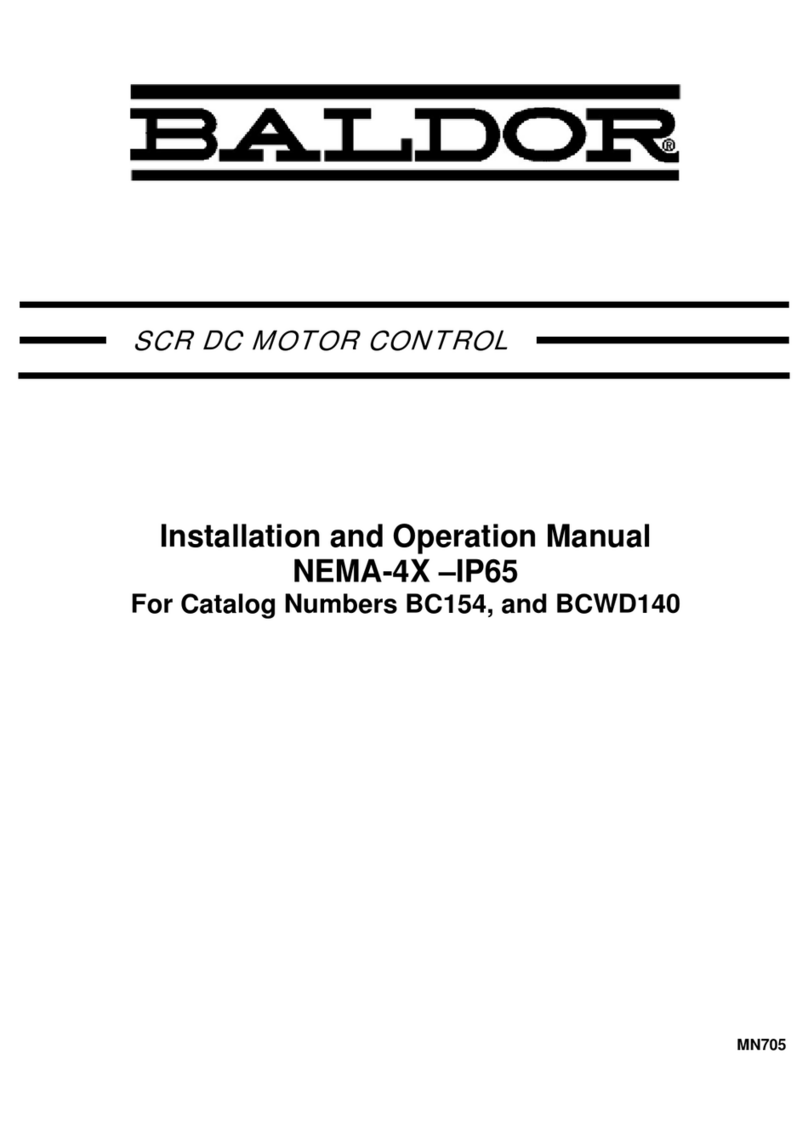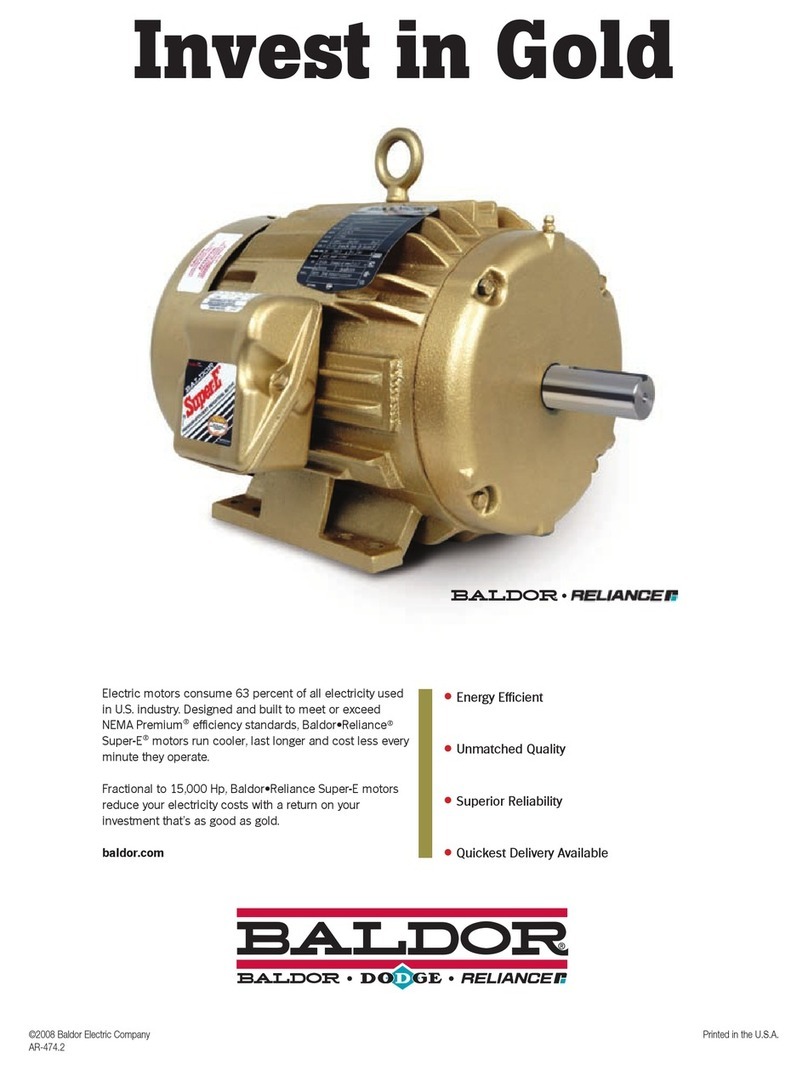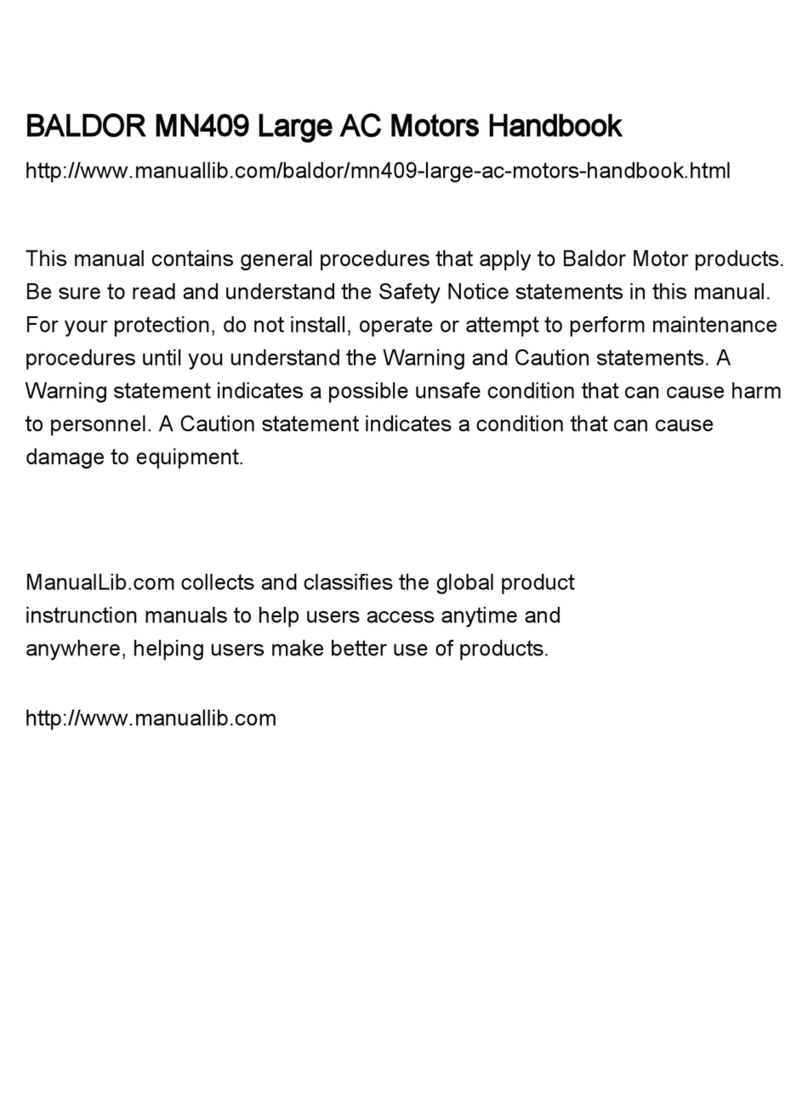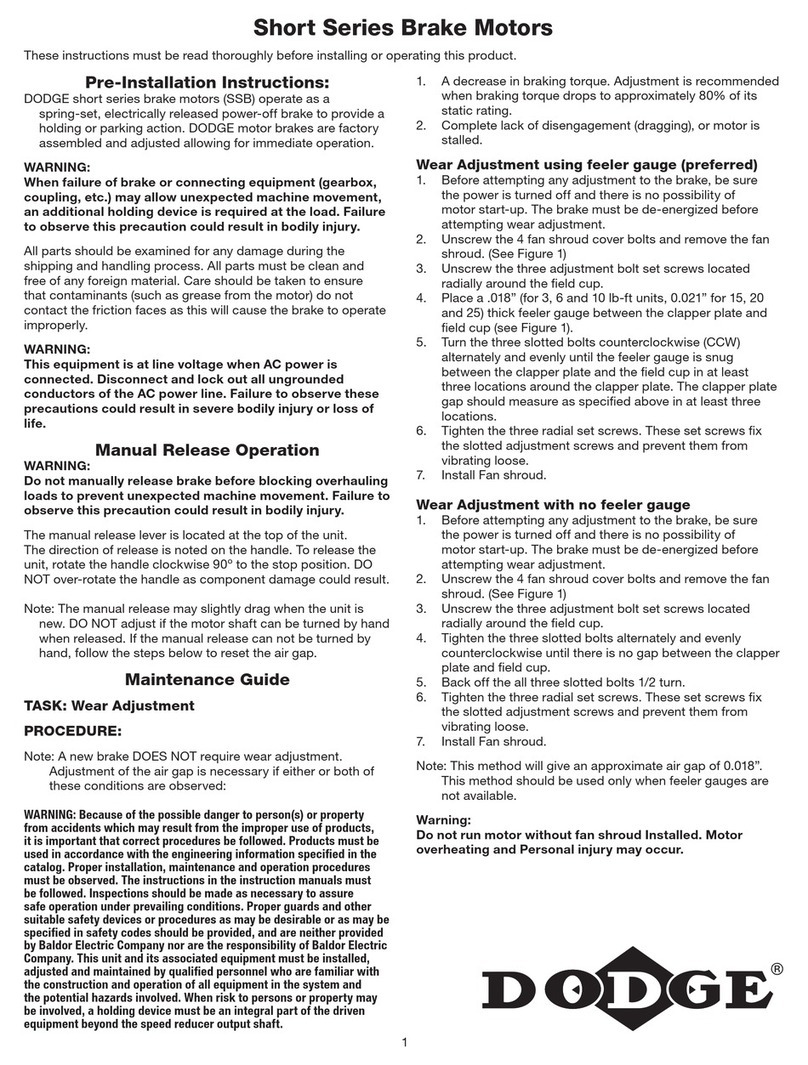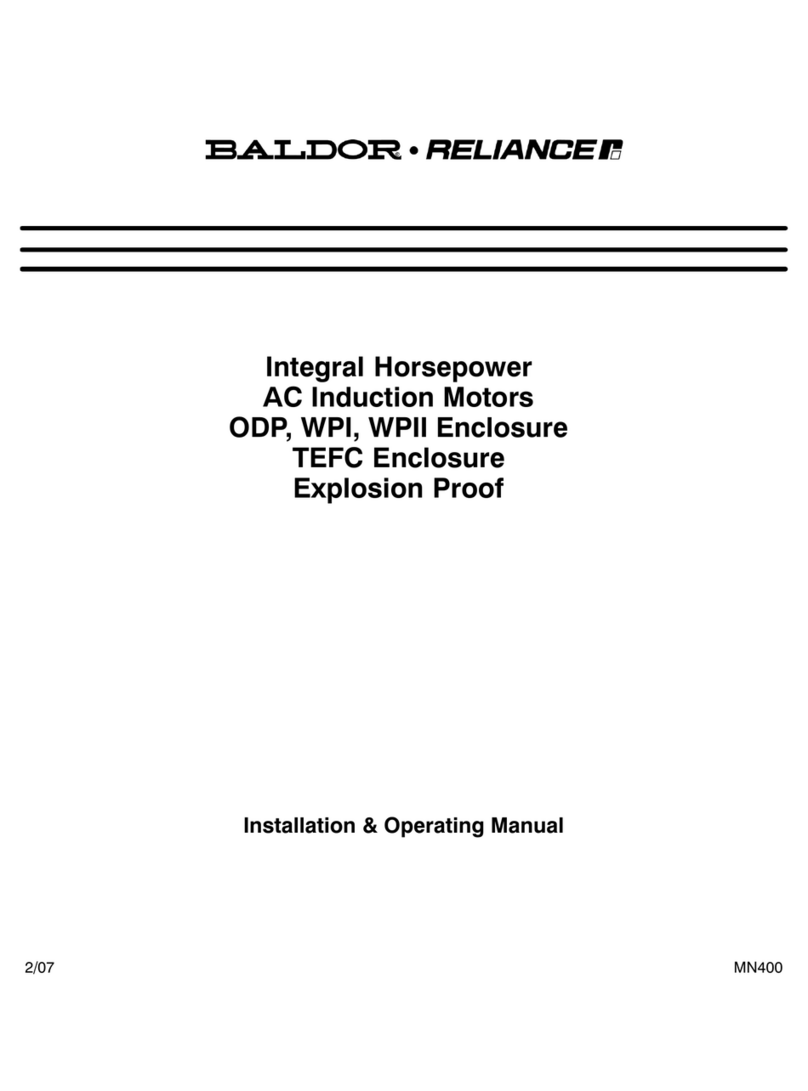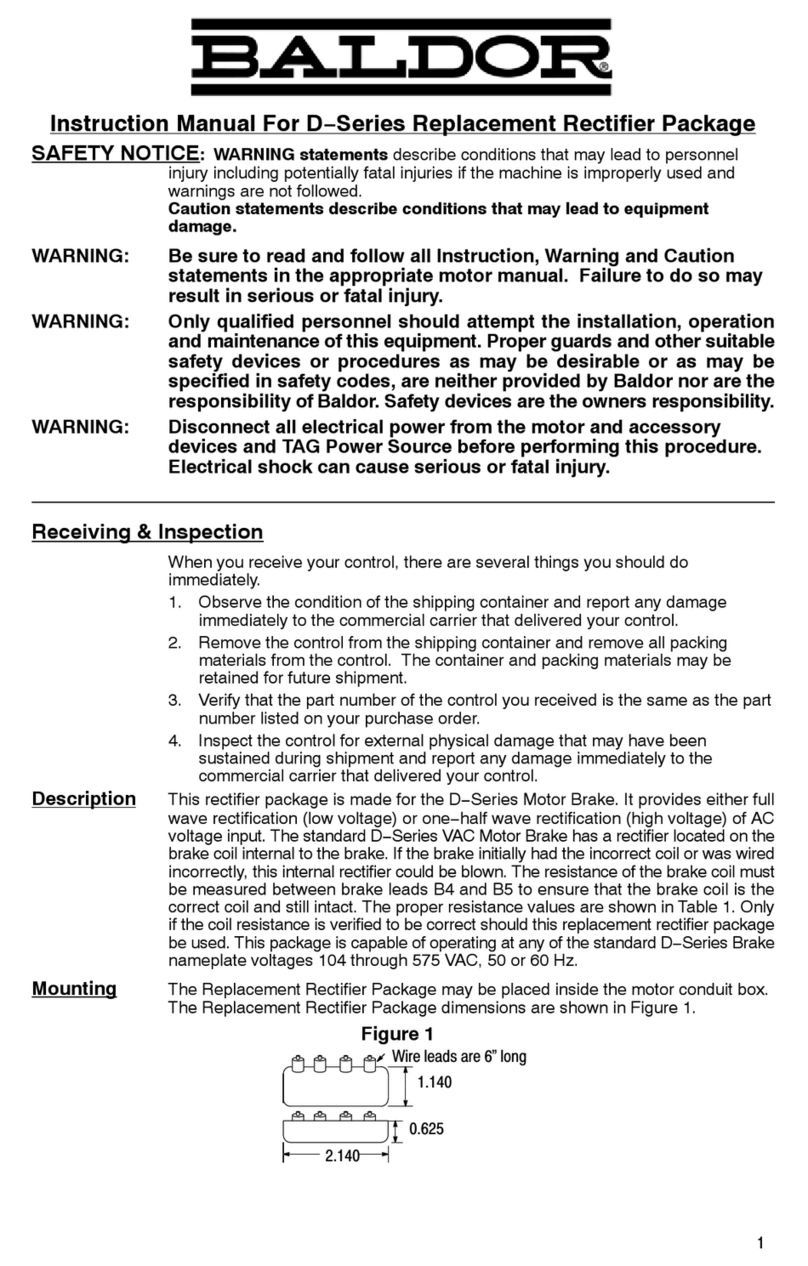
MN301 Installation & Operation 2-3
WARNING: Guards must be installed for rotating parts such as couplings, pulleys, external fans,
belts, chains and unused shaft extensions, should be permanently guarded to
prevent accidental contact by personnel. Accidental contact with body parts or
clothing can cause serious or fatal injury.
Surface temperature of motor enclosure may reach temperatures which can cause discomfort or injury
to personnel accidentally coming into contact with hot surfaces. When installing, protection should be
provided by user to protect against accidental contact with hot surface.
Some satisfactory methods of guarding are:
1. Covering the machine and associated rotating parts with structural or decorative parts of the
driven equipment.
2. Providing covers for the rotating parts. Covers should be sufficiently rigid to maintain adequate
guarding during normal service.
First Time Start Up
WARNING: Do not touch electrical connections before you first ensure that power has been
disconnected. Electrical shock can cause serious or fatal injury. Only qualified
personnel should attempt the installation, operation and maintenance of this
equipment.
Be sure that all power to motor and accessories is off. Be sure the motor shaft is disconnected from the
load and will not cause mechanical rotation of the motor shaft.
1. Make sure that the mechanical installation is secure. All bolts and nuts are tightened etc.
2. If motor has been in storage or idle for some time, check winding insulation integrity.
3. Inspect all electrical connections for proper termination, clearance, mechanical strength and
electrical continuity.
4. Be sure all shipping materials and braces (if used) are removed from motor shaft.
5. Manually rotate the motor shaft to ensure that it rotates freely.
6. Replace all panels and covers that were removed during installation.
7. Momentarily apply power and check the direction of rotation of the motor shaft.
8. If motor rotation is wrong, be sure power is off and change the motor lead connections.
Verify rotation direction before you continue.
9. Start the motor and ensure operation is smooth without excessive vibration or noise.
If so, run the motor for 1 hour with no load connected.
10. After 1 hour of operation, disconnect power and connect the load to the motor shaft. Verify all
coupling guards and protective devices are installed. Ensure motor is properly ventilated.
Coupled Start Up This procedure assumes a coupled start up. Also, that the first time start up
procedure was successful.
1. Check the coupling and ensure that all guards and protective devices are installed.
2. Check that the coupling is properly aligned and not binding.
3. The first coupled start up should be with no load. Apply power and verify that the load is not
transmitting excessive vibration back to the motor though the coupling or the foundation. Vibration
should be at an acceptable level.
4. Run for approximately 1 hour with the driven equipment in an unloaded condition.
The equipment can now be loaded and operated within specified limits. Do not exceed the name plate
ratings for amperes for steady continuous loads.
Jogging and Repeated Starts Repeated starts and/or jogs of induction motors generally reduce the
life of the motor winding insulation. A much greater amount of heat is produced by each acceleration or
jog than by the same motor under full load. If it is necessary to repeatedly start or jog the motor, it is
advisable to check the application with your local Baldor distributor or Baldor Service Center.
Permanent Lubrication
Ball bearing with permanent lubrication can be operated about 20,000 hours (up to a maximum of
48 months) without replacement.
